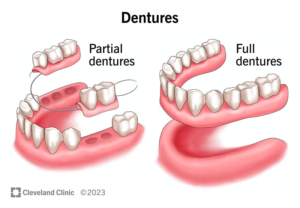Life Insurance Greenville SC provides peace of mind by ensuring that your loved ones will be financially cared for after you die. It can help cover debts, pay the mortgage, fund children’s education, and more.
A life insurance policy is typically a contract between the insurer and a beneficiary. Beneficiaries are typically primary and contingent.

Term life insurance is the most basic form of life insurance. It pays a death benefit to your beneficiaries only if you die during the length of the policy, which can be anywhere from one to 30 years. Term policies are often less expensive than whole life policies.
Most people buy life insurance to make sure that their family’s finances are secure after their death. This can include paying off their mortgage, ensuring that children have money for college, or making sure that any debts are paid off. Depending on the amount of debt and the number of people who depend on the insured, it might be appropriate to buy a policy with a larger face value.
Some term life insurance policies allow you to renew the policy at a higher rate after its initial level term period ends. You can also convert the policy to a permanent policy, but you’ll usually have to pass a medical exam. The conversion option can be useful if you think that your needs will change. However, you may not be able to get the same death benefit as before.
Another option is to add a rider that increases the death benefit or allows you to withdraw a portion of the death benefit for medical expenses. This type of rider is typically more common with whole life insurance, but some companies offer it for certain term policies. Some term policies also have a grace period, which gives you an additional period of time to pay the premium.
Unlike whole life insurance, which builds a savings account in addition to a death benefit, term policies do not accumulate cash value that you can borrow against. Term policies are typically cheaper than whole life insurance because they only provide insurance coverage for a specific length of time.
It’s important to understand the different life insurance types before choosing one. Whether you’re looking for a policy that will pay off your debt or just to ease the financial burden on your loved ones after your death, it’s best to discuss your options with a knowledgeable professional. NerdWallet is here to help. Our writers are subject matter experts who use primary, trustworthy sources to inform their work and connect you with solutions that fit your budget.
Whole life insurance is a permanent policy that guarantees coverage for the entire lifetime of the insured, provided the required premiums are paid. It also builds cash value and provides a number of unique features that can make it an important part of a long-term financial plan. In addition, it may be beneficial to people who have a dependent with disabilities or other conditions that require ongoing care. Depending on the policy, whole life insurance can be a good option for those who want to fund trusts. However, it is important to consult with an attorney and financial advisor before making any decisions regarding a trust.
A portion of each premium payment goes to a savings component known as the cash value. The cash value accumulates over time, and it can be accessed with loan or withdrawal options. This feature makes whole life insurance a more versatile product than term policies, which only pay out if death occurs within a specific time frame. However, it also means that it tends to be more expensive.
The premiums for a whole life insurance policy are typically level and will not change over the course of the policy’s duration. In addition, the death benefit is guaranteed to be at least the amount of the face value, but it may vary based on the performance of the investment and cash values. Some whole life insurance policies offer the opportunity to receive dividends, which are a share of the insurer’s annual profit. These dividends can be used to reduce premiums or increase the death benefits.
Unlike other forms of permanent insurance, whole life insurance policies typically have a cash value component that can earn a rate of return. However, it should be noted that outstanding loans and withdrawals will reduce the death benefit in the event of a beneficiary’s death.
Whole life insurance provides an excellent form of financial security for individuals and families who rely on the income of one person. In addition to providing a death benefit, it can also provide tax advantages, as the premiums and interest earned on cash value are often taxable at a lower rate than they would be in a regular investment account.
Variable life insurance policies offer a combination of insurance and investment options. Unlike whole life or universal life, these policies allow you to invest your policy’s cash value in a variety of subaccounts that function like mutual funds. This type of policy is often recommended for people with high incomes who have specific investment needs and a higher risk tolerance. However, it is important to understand the risks and costs associated with this product before you buy it.
A variable life insurance policy can offer many benefits, including level premiums and a guaranteed death benefit. However, it also has several disadvantages. These include a lower rate of growth than other types of life insurance, and the possibility that the investment account will lose value. In addition, the policy may have high internal costs, which can eat into your returns.
The key to choosing a suitable variable life insurance policy is to compare quotes and policy illustrations. The policy should provide a breakdown of the cost of the policy, including the management fees. Then, you can choose the best option for your situation.
You should also consider the tax implications of your investment decisions. For example, if you take out a loan from your policy, the amount of money you receive will be taxed at ordinary federal income rates, rather than the more favorable capital gains rates. In some states, you may even be required to pay state taxes on your policy’s loans.
Another important thing to remember is that there are alternatives to variable life insurance. If you decide that it is not right for you, there is a short window called the “look period” in which you can cancel your policy without incurring a fee. This window varies by insurer, but it usually lasts for 10 days or less. If you are not happy with your decision, make sure to get a full refund of the premiums you paid for the policy. You should also ask your financial professional for a policy prospectus, which provides detailed information about the policy’s fees and features.
Universal life insurance is a type of permanent life insurance that allows you to adjust premiums and death benefits, within certain limits. The policy also has a cash value component and can be a good choice for people with variable incomes. In addition, UL policies can offer flexibility in the form of loan or withdrawal options. However, this type of life insurance may not provide as much coverage as whole life insurance.
It’s important to remember that a universal life insurance policy doesn’t have the same guarantees as whole or term life insurance, so you should always consult a financial professional before buying one. Your needs and goals will vary, and a financial advisor can help you decide which life insurance option is best for your situation.
With a traditional indexed universal life insurance policy, your money in the cash account can earn interest based on increases in an equity index, such as the S&P 500. This can be a good option for people who want to earn interest in the stock market but don’t want to take on risky investments. However, it’s important to remember that you will still be exposed to market volatility.
The other types of universal life insurance are variable universal life (VUL) and guaranteed universal life (GUL). VUL policies allow you to change the premium payments and death benefit, but they don’t guarantee any gains on your cash value. In addition, you’ll have to pay interest on any money withdrawn from your cash account, and policy loans can deplete your cash value. GUL policies are more structured than a UL policy, and they’re a better choice for those who want to control their premiums.
Both whole life and universal life insurance offer lifetime coverage, but the biggest difference is that a whole life policy has a fixed death benefit. While both life insurance types have a flexible death benefit, a UL policy offers more flexibility in terms of adjusting the premiums and death benefits. However, it’s important to note that the changes you make will affect your cash value growth and possibly cause the policy to lapse if you don’t keep up with your premium payments.




